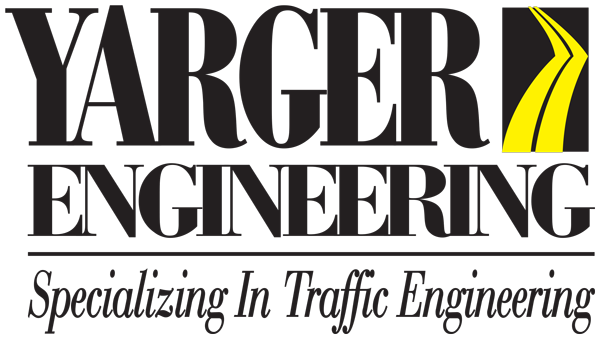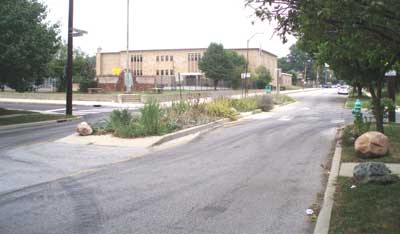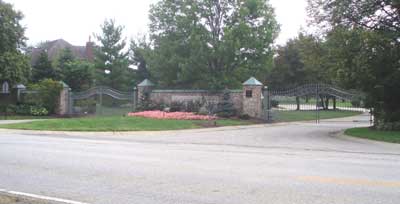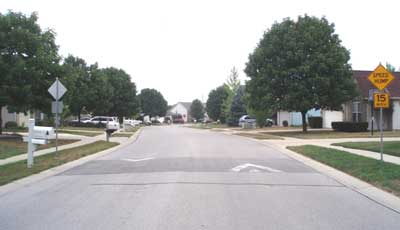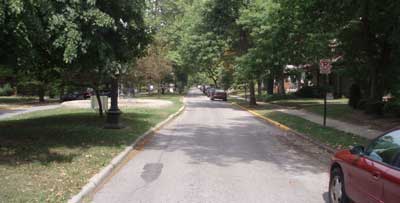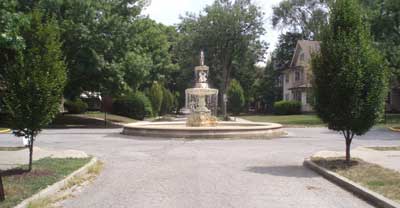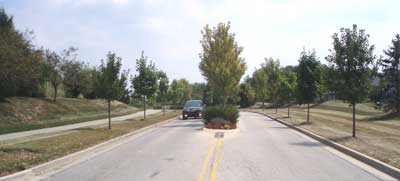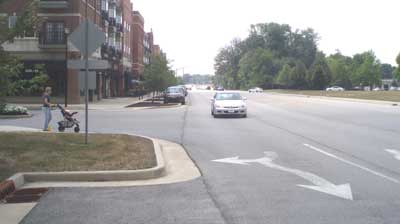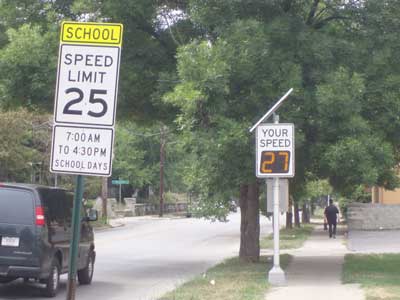Neighborhood Traffic Calming- Yarger Engineering, Inc. 317-475-1100 Email Us

In this Article
Overview
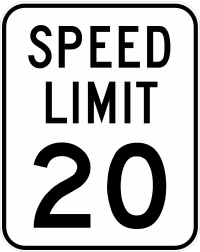
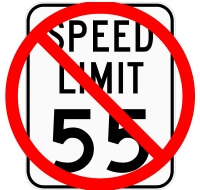 Traffic complaints are common in neighborhoods as well as on freeways, arterials and collectors (through streets), but they typically differ in scope. Residential streets are different than through streets because residential streets are where we live. Freeways may have 100,000 vehicles per day traveling at 55 MPH, and arterials may have 20,000 vehicles per day traveling at 40 MPH, but residential streets are different. We want low volumes and low speeds because we believe that will make our neighborhoods safer and more enjoyable. While we expect all roads to be safe, more concern is raised about safety in neighborhoods because if a problem can happen once, it can happen to someone we know and love. We don't think much about crashes that happen miles away on some arterial, but when it happens in front of our home, it becomes a concern; and it tends to fall in to the hands of the home owners' association board in terms of complaints.
Traffic complaints are common in neighborhoods as well as on freeways, arterials and collectors (through streets), but they typically differ in scope. Residential streets are different than through streets because residential streets are where we live. Freeways may have 100,000 vehicles per day traveling at 55 MPH, and arterials may have 20,000 vehicles per day traveling at 40 MPH, but residential streets are different. We want low volumes and low speeds because we believe that will make our neighborhoods safer and more enjoyable. While we expect all roads to be safe, more concern is raised about safety in neighborhoods because if a problem can happen once, it can happen to someone we know and love. We don't think much about crashes that happen miles away on some arterial, but when it happens in front of our home, it becomes a concern; and it tends to fall in to the hands of the home owners' association board in terms of complaints.
The complaints tend to take various forms, but they usually boil down to five main issues: too much traffic, too high of speeds, too much congestion, noise and safety. In a way, the first two can be thought of as precursors of the last three. Too much traffic and too high of speeds are relative to the type of road. 55 MPH is fine on the freeway, but not on neighborhood streets. Other people should be traveling on streets outside the neighborhood; that is why we have freeways, arterials, and collectors. The problem for the board is how to deal with the complaints. Some may ignore the complaints, but there are ways to deal with them. Neighborhood traffic calming has been around for quite a while in various forms, but it has gained momentum over the last few decades. Basically it is a group of roadway design elements that make neighborhood streets more livable by reducing traffic volumes, slowing speeds, and making the roadway area more pedestrian friendly.
The first step is to define the problem. Many times the complaint may be isolated, but not always. It may be obvious, but it needs to be documented and presented to someone that can do something. Keep in mind that the complaint may not always be the same thing as the actual problem.
Typically neighborhood streets are under local government control in some way or another. Neighborhood streets may be privately owned, but the local government still will have some level of control of what can be done. For example, there are state laws that cover motor vehicle operation; while zoning and subdivision control ordinances control what can be done to the street. Most will likely reference state or national guidelines with some minor modifications. In Indiana, traffic control devices must follow the Indiana Manual on Uniform Traffic Control Devices (MUTCD). Most, if not all other states have similar laws. The federal government puts out a MUTCD which states either adopt as theirs, or states like Indiana can adopt their own based on the federal MUTCD. After a problem has been documented, it can be presented to the local government for the next step. Various agencies may be involved including local law enforcement, department of public works, and local planning departments. They may take the complaints and deal with the issues, or have the board hire a consulting traffic engineer to lead the process and work with the board and local government.
Whether a government agency or a consulting traffic engineer does the work, the next step is to define the problems in terms of the three Es: education, enforcement and engineering. This article primarily will deal with the last E, engineering. Data should be collected, preferably for an extended period like a week to determine traffic volumes, speeds and classifications (motorcycle, car, truck, semi, etc.) Other data may be collected as appropriate, such as roadway conditions, traffic control devices, crash data, and occasionally, origin – destination data. Origin – destination data has to do with where vehicles enter, stop, and leave the neighborhood to determine if they are cut-through traffic. Once the data is collected, it can be compared to norms for defining the problem. Defining the problem may take many steps and should be lead by a traffic engineer, either from the local government or a consultant. The problem must be defined correctly, or the solution may not address the problem, and could actually create other problems, such as noise, congestion, or simply moving the problem to another neighborhood street.
Too much traffic within a neighborhood typically is a problem with poor design, unrealistic expectations, or cut-through traffic. The poor design problem comes from having one residential street act as a neighborhood collector with too many local streets forced to feed into it. Cul-de-sac streets lower the traffic on their street by forcing all traffic to a neighborhood collector street. Unrealistic expectations occur when those living on the neighborhood collector street think their street should be limited to just their use. Generally a home will generate about 10 one-way trips per day. Condominiums and apartments tend to generate a little less, while large homes with three or four car garages can generate more. A home that is located at the entrance to a neighborhood with 200 houses can expect to see about 2,000 vehicles per day if there is only a single entrance, and a second entrance may not equally split the traffic. If traffic volumes are vastly different than what can be expected from the number of houses, condominiums, or apartments in a neighborhood, the problem is likely cut-through traffic where outsiders (people who don't live or have business in the neighborhood) use the neighborhood streets as if they were arterials and collectors for through trips.
Cut-through traffic can grow over time and need not be fundamentally a problem of the neighborhood design, but actually a problem of the city's through streets being too congested. While the best solution for everyone may be to solve the through street congestion, major roadway improvement projects take time and lots of money. Sometimes they can be solved by a simple measure like signal timing, but normally the cut-through traffic will have to be addressed in the neighborhood until the major street problems can be addressed.
Cut-through traffic can be addressed through measures that make the neighborhood streets less attractive to through traffic, mainly by making the cut-though routes less direct or slower. Some of the changes that can be made to neighborhood streets are:
- Street closures, full or partial
- Abutting one-way blocks
- Diverters, full or partial
- Turn restrictions
Speeding can be address through several other changes to the roadway network, and may in turn reduce the cut-through problem as well. These include:
- Vertical deflections – speed humps (not speed bumps), speed tables, and raised intersections
- Horizontal deflections – traffic circles, chicanes, diverters
- Narrowing – medians, chokers, bulb-outs, landscaping
- Signage and pavement markings (Usually not effective unless there is an active component.)
Traffic calming techniques can improve neighborhood traffic flow by reducing traffic volumes, slowing other traffic, and making the roadway area more pedestrian friendly. The process of collecting complaints, contacting local government, defining the problem and selecting the appropriate treatment is fairly straight forward with the help of a professional engineer with training and experience in traffic engineering.
Defining the Problem
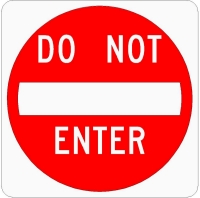 Defining the problem typically will be the work of the traffic engineer. They will need all of the complaints, preferably written down as a starting point. They may be the professionals, but they haven't lived in the neighborhood for years, so the individual complaints can provide a starting point. On the other hand, their profession perspective will allow them to see things clearly and their years of experience and training will help them define the actual problem instead of just symptoms.
Defining the problem typically will be the work of the traffic engineer. They will need all of the complaints, preferably written down as a starting point. They may be the professionals, but they haven't lived in the neighborhood for years, so the individual complaints can provide a starting point. On the other hand, their profession perspective will allow them to see things clearly and their years of experience and training will help them define the actual problem instead of just symptoms.
The first thing the traffic engineer should do is familiarize him or herself with the area and the complaints. They can start with talking with the board representative on the phone while viewing the area on Google Earth. If the complaints are available electronically, it is a good idea to email them to the engineer. Next is a visit to the neighborhood to see the actual conditions on the ground. Google Earth is a great tool, but nothing beats being there in person. If the complaints revolve around a time sensitive issue, like cut-through traffic that only occurs during rush hours, the visit should take place during that time of day. The engineer may take photos at this time.
 After the visit, a scope of work and schedule should be drawn out by the traffic engineer. If an engineering consultant is involved, there should also be a fee proposal prepared. Traffic engineering fees range from $100 to $150 per hour with technician fees ranging from $50 to $100 per hour. The hard part is figuring out how many hours the work will take. There will also be direct expenses involved for travel and possibly equipment charges, although most build the equipment charges into their hourly rates. Fees can be specified either as hourly with expenses, or as a lump sum. Some proposals may have multiple parts or phases itemized. The proposal should also come with terms and conditions so there is a clear working arrangement.
After the visit, a scope of work and schedule should be drawn out by the traffic engineer. If an engineering consultant is involved, there should also be a fee proposal prepared. Traffic engineering fees range from $100 to $150 per hour with technician fees ranging from $50 to $100 per hour. The hard part is figuring out how many hours the work will take. There will also be direct expenses involved for travel and possibly equipment charges, although most build the equipment charges into their hourly rates. Fees can be specified either as hourly with expenses, or as a lump sum. Some proposals may have multiple parts or phases itemized. The proposal should also come with terms and conditions so there is a clear working arrangement.
The next step after the scope of work is established data collection. Most data collection will fall into one of three categories, traffic flow data (number of vehicles by hour, type of vehicles, and speeds), physical features such as geometrics and traffic control, and crash records.
Traffic flow data can be collected using automatic traffic data collectors that are typically rubber tube, magnetic, radar or video based. Each has their pros and cons, but the decision on the appropriate type should be left up to the traffic engineer. Origin and destination data is rather difficult, and therefore, expensive to collect, so it is typically estimated unless the problem is severe.
The physical survey will likely start with an airphoto and if available, a neighborhood site plan from the development of the neighborhood. Some local agencies may have access to Graphical Information Systems (GIS) that can provide good base mapping as well. Photos or video of the neighborhood should be taken as well as field measurements of critical items.
Crash data is available from local or state governmental agencies and may involve a fee per record. Getting the actual crash report instead of a summary is very helpful because the summaries tend to leave out important details, or show conflicts in the data. For example, the accident location or vehicle maneuvers immediately preceding the accident may not be accurately portrayed in the summary. Some may report accidents at an intersection, when they actually occurred in a parking lot or driveway.
Once the data is collected, it should be analyzed and compared to accepted norms. Suspicions of cut-through should be checked against traffic estimates for the same facility based on the number of houses and amenities within the neighborhood.
Speeds are analyzed by the data collection software. The 85th percentile speed (speed which 15% are exceeding) should be checked against the posted speed limit and existing conditions. Complaints may be localized with the person issuing the complaint having unrealistic expectations that motorist should drive 15 MPH in front of their home, while at the same time, that person may feel it is OK for them to drive 35 MPH in the rest of the neighborhood. Most motorists don't realize the difference between driving 20 and 30 MPH, but it can have a very significant impact on their ability to stop before a crash and the severity of a crash. For example, a car hitting a pedestrian at 20 MPH has a 5% chance of being fatal, while at 30 MPH the probability raises to 45% and at 40 MPH there is an 85% chance the impact will be fatal. Speed does not kill; the impact of a speeding car on the pedestrian does! Force is a function of acceleration and the pedestrian going from zero to 20 MPH is much different than going from zero to 30 or 40 MPH. Hitting a pedestrian at 40 MPH is 17 times as likely to kill the pedestrian than hitting them at 20 MPH. That is why cars can safely go 55 – 70 MPH on freeways, but when pedestrians are present, high speeds are not appropriate due to the likelihood and consequences of an impact.
Crash data should be analyzed by the traffic engineer. Crash rates and severity are indicators of potential problems, but because humans are involved, some crashes should be expected. As the saying goes, "To error is human." A single crash may be the sole result of human error despite all efforts to avoid it. This type of crash can truly be called an accident whereas other crashes may be due to negligence. On the other hand, more than one accident per million vehicles entering an intersection indicates a potential problem. There is also a big difference between several low speed fender benders and fewer severe injury crashes. Patterns should be identified, such as all of the accidents being northbound cars impacting eastbound cars turning left from a stop sign.
After documenting what is happening, the next question to address is why is it happening? The traffic engineer should lead this section, and may require a modification to the scope of work or permission from the board to move to a subsequent phase or option in the agreement if the board hires an engineering consultant. Trying to move to solutions before answering the why question can lead to unforeseen consequences where the tried solution may fail or cause other problems.
Finally a report should be written documenting the findings of the problem definition step. At this point it may only be part of a full report since appropriate solutions to the have not yet been identified. The report may be as formal or informal as appropriate for the situation.
Solutions
It is extremely tempting to jump to this step of the process thinking that the problem is obvious. Don't do it! Be sure to go through the steps of gathering the complaints, contacting your local government, hiring a professional traffic engineer if one is not provided by the government, and formally defining the problem. Specific solutions should be tailored to specific problems. Installing the wrong solution can create more problems than doing nothing.
Cut-Through Traffic
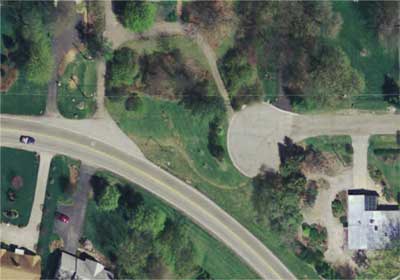 Cut-through traffic solutions involve making the neighborhood streets less attractive to through traffic. The downside is that they typically have negative impacts on the neighbors at the same time. The cut-through traffic problem needs to be weighed against the negative impacts on the neighbors.
Cut-through traffic solutions involve making the neighborhood streets less attractive to through traffic. The downside is that they typically have negative impacts on the neighbors at the same time. The cut-through traffic problem needs to be weighed against the negative impacts on the neighbors.
The most obvious way of making the neighborhood streets less attractive is to eliminate the through route with a street closure. This is a pretty dramatic approach, but it is very effective. With street closures, it may not be necessary to close the street to all traffic, just motor vehicles. Sidewalk or multi-use paths can remain open by simply making the opening too small for motorized vehicles. Half a street can also be closed by making a portion one-way, and removing the remaining pavement or installing curbing that leaves only 5 feet open for a bicycle path.
Alternating one-way patterns on a street can leave it open to local traffic while making it unattractive to through traffic. By alternating the direction of the one-way restriction every block, streets will lose their ability to function for through traffic by forcing a turn at the end of every block.
Diverters are physical barriers that force turns at intersection. They can be in the form of a median in the middle of the cross street or a diagonal diverter that causes an intersection to turn into a pair of turns. Like the street closure, it can remain open to pedestrians and bicycles. Diverters can function as speed calming since they require vehicles to make low speed turns.
 Turn restrictions are a form of diverter where turns are necessary for the cut-through route. Signs and pavement markings are typically ineffective without constant enforcement unless there is some kind of physical change to the intersection making the turn difficult. A typical radius for a local street may be 20 feet, but if the turn is prohibited the radius can be reduced to practically zero.
Turn restrictions are a form of diverter where turns are necessary for the cut-through route. Signs and pavement markings are typically ineffective without constant enforcement unless there is some kind of physical change to the intersection making the turn difficult. A typical radius for a local street may be 20 feet, but if the turn is prohibited the radius can be reduced to practically zero.
Gated neighborhoods are another way to stop through traffic, but offer significant problems with access cards, gate maintenance, visitors and service vehicles. They may also have legal implications that should be investigated. Most traffic calming for cut-through traffic works by making the trip less attractive, not impossible.
Speed Control
Speed solutions involve making the high speed travel uncomfortable typically through vertical or horizontal deflection, or through psychological methods.
Speed humps are some of the most common traffic calming devices around. Speed humps are different than speed bumps. Speed humps are typically 12-14 feet long by 3 inches high where as speed bumps are typically 2 feet long by 4 inches high. Speed bumps because of their short length can be absorbed by the vehicles suspension at higher speeds, but tend to jolt the driver at lower speeds. Speed bumps are only comfortable at less than 5 MPH. The extra length of a speed hump smooths out the ride for low speeds, but forces the entire vehicle to raise up, and therefore the driver, to feel the speed hump at higher speeds. Speed humps are not without their drawbacks. The first couple of drawbacks that are typically mentioned are that they impede emergency vehicles and snow removal. These can be over come with some design features, such as variation called speed cushions or lumps that have a portion in each lane that is not elevated. The spacing is designed so that fire trucks can straddle the the raised portion with their wheel paths in traveling through the voids, but narrower cars can't avoid hitting the raised portion. Speed humps have been used in many snowy areas. There are also speed humps that are removable so that they are only there three seasons of the year. Other drawbacks include additional noise created by trucks crossing them.
Speed tables are a variation of speed humps with a flat section in the middle to lengthen the speed table. These are better accepted by emergency vehicles, but due to their size, they are more expensive. Speed tables can operate as a mid-block raised crosswalk, like this one on Main Street at the Monon Trail in Carmel, Indiana. Note that the policeman next to the one-way sign is actually a statue!
Raised intersections are basically speed tables in the middle of intersection. They have the advantage of impacting two streets with one speed table, and focusing the driver's attention on the intersection where there are more conflict points with pedestrians, bicycles and other vehicles. Important design considerations of vertical deflection are drainage, pedestrians and non-motorized vehicles such as bicycles and wheel chairs. This one is on Main Street in Speedway, Indiana. There are a few more within a half mile to help slow traffic along Main Street's entire length. Note in this case there is a separate bicycle track on the far side of the parked cars, as well as a lot of street furniture. Just out of view there are restaurants with outdoor seating.
Horizontal deflection works by making the vehicle leave the high speed path. The lateral forces on the driver are uncomfortable so they slow down. Care must be taken to be sure that the deflection is sufficient to get the desired result without unknowingly making travel by larger vehicles impossible without leaving the road. While the bulk of vehicles in a neighborhood will be cars and light duty trucks, semis still need access such as moving vans, construction vehicles and the like. It is very important to check the design of horizontal deflection based traffic calming for fire truck paths.
The easiest form of horizontal deflection to think of is the chicane that makes the vehicle turn to one side and then back. These however are not very effective on their own unless there are medians or oncoming traffic preventing vehicles from using the opposing lane. The easiest form of chicane to make is created by allowing on-street parking on narrow roads and alternating the side on which parking is allowed. If the roads are too wide or if on-street parking is rare, there won't be any deflection to slow traffic.
Neighborhood traffic circles work by placing a circular island in the middle of the intersection so that through traffic must jog to the right. They are similar to roundabouts in that they both have round center islands, but traffic circles are much smaller, the center island may be mountable to address large vehicles, and there are typically no splitter islands on the approaches. They are still controlled as all-way yield on the approaches like roundabouts. Installing all-way stop control at a traffic circle is redundant as it eliminates the need for the horizontal deflection to control speeds, assuming everyone stops for the stop signs. Due to the yield control, it is important to provide clear sight lines on the approaches. Sight lines don't need to be appropriate for the posted speed limit since the traffic circle will be designed to slow vehicles on the approach, but visibility is needed for a 15 – 20 MPH approach speed on all approaches.
Narrowings work psychologically on the driver. They can be accomplished by bringing the curbs in, by installing a median, or by landscaping the adjacent grass areas. As with horizontal deflections it is important to consider fire and other trucks that need access to the neighborhood. In a fire emergency, it is important that one fire truck can park in the narrowing while another can pass by, and some fire trucks are 10 feet wide excluding the mirrors.
Bulb-outs are where the roadway is narrowed at an intersection by bringing the curbs in at the crosswalks equal to the parking lanes. This helps pedestrians see oncoming traffic, the motorist see the pedestrians before they enter the crosswalk and keeps parked cars from parking too close to the intersection.Like vertical deflections, it is important to consider drainage and other modes of transportation in the design of horizontal deflections.
Signage and pavement markings can be helpful, but rarely accomplish the full desired effect by themselves. Speed feedback signs are more effective at reducing speeds to the speed limit than a simple speed limit sign. Speed limit signs tend to become invisible to the regular driver who determines their vehicle speed based on their own judgment rather than a sign, unless there is some sort of enforcement. Good traffic calming elements are self enforcing rather than relying on the driver's good will or police enforcement. Warning signs rarely reduce speeds without an associate impediment to the driver, such as a slow speed turn or speed hump.
Some times the best solution may be to incorporate two techniques together, such as providing a narrowing at a speed hump. Horizontal deflections may not work without a median if volumes are already low.
Speed solutions tend to work only around where they are installed, so they need to be installed periodically to drop speeds throughout the neighborhood. For a desired 20 MPH speed, they should be installed about every 250 feet along the road. As the desired speed increases, so does the distance between them. Conversely, spacing them too far apart will not provide the desired speed results.
To assist people crossing the road, there are signal and signing options. A pedestrian hybrid beacon, sometimes called a HAWK can be installed per the MUTCD. It presents a stop condition to the vehicles to allow pedestrians to cross, but then allows cars to proceed after stopping if no pedestrians are in the vehicle's path, before returing to a dark condition. The pedestrian has standard walk/wait lights. A problem with this is that like a regular signal, the pedestrian or cyclist has to wait for the walk light to come up, but will likely cross against the don't walk light if there is gap in traffic. As can be seen in the video, if the vehicle stops, but the walk light hasn't come up and the pedestrian waits, the vehicle may ignore the solid red and proceed just as the walk light comes up.
A variaion on the pedestrian hybrid beacon is the pedestrian crossing sign with a push button activated rectangular rapid flashing beacon (RRFB). With it, there are lights under the sign that draw the driver's attention to the crossing sign, but don't necessarily require a full stop. Like the pedestrian hybrid beacon, it is pedestrian pushbutton activated and times out to return to a dark state.
Crash Problems
Solutions to crash problems depend on the specific patterns involved, but many can relate to excessive speeds and sight distance problems. Addressing the causes usually will cure a crash problem, but sometimes that may not be possible so other improvements may be needed, such as an all-way stop when it is impossible to provide adequate sight distance. Random accidents are very hard to solve since they typically will be based on driver error, and the only sure way would be to eliminate the driver. Even this would not stop mechanical breakdowns within the car that can cause crashes, such as brake failures or stuck accelerators. In any event, we have gone outside the scope of traffic calming.
Area Wide Plan
Solutions should be part of an area-wide traffic calming plan. Diverting cut-through traffic from one neighborhood street to another does not solve the problem. Speed lowering techniques tend to only work near the calming element, so they need to be repeated at regular intervals to calm traffic throughout the neighborhood. A good traffic engineer should provide an overall plan and not just spot solutions.
At this point, one of the drawbacks to any traffic calming element is the cost. Local governments may have funds for some traffic calming, but rarely have the ability to fund all desired improvements. The federal government is still working on the next transportation bill, but given the national budget constrains, little if any federal funding is expected for traffic calming. Different elements have associated costs, but in general the neighborhood should be thinking in terms of tens of thousands of dollars for an effective treatment plan. Construction costs tend to vary by location and time due to varying design requirements, materials, labor, and even the price of oil and the economy. The traffic engineer can better address costs once they have a good handle on the problems and potential solutions.
More information on traffic calming can be found on the Institute of Transportation Engineers' website at: http://www.ite.org/traffic/index.asp
Yarger Engineering offers free initial consultation. Call us at 317-475-1100 or email us to discuss your neighborhood!
